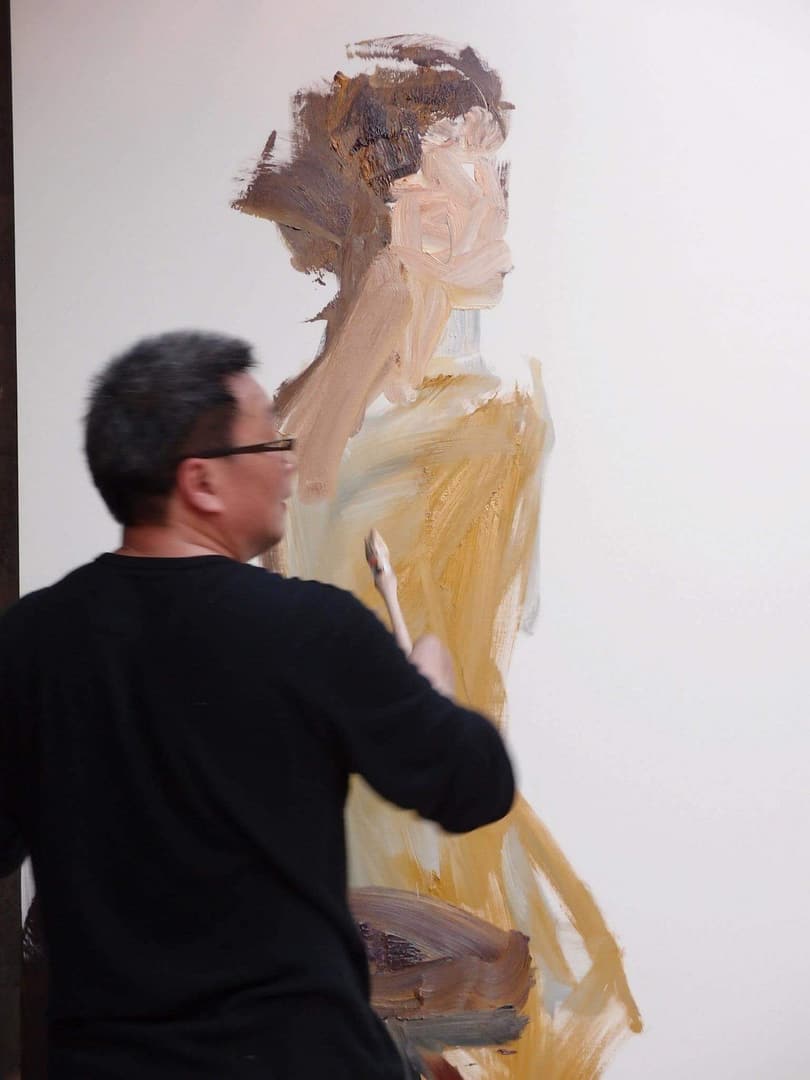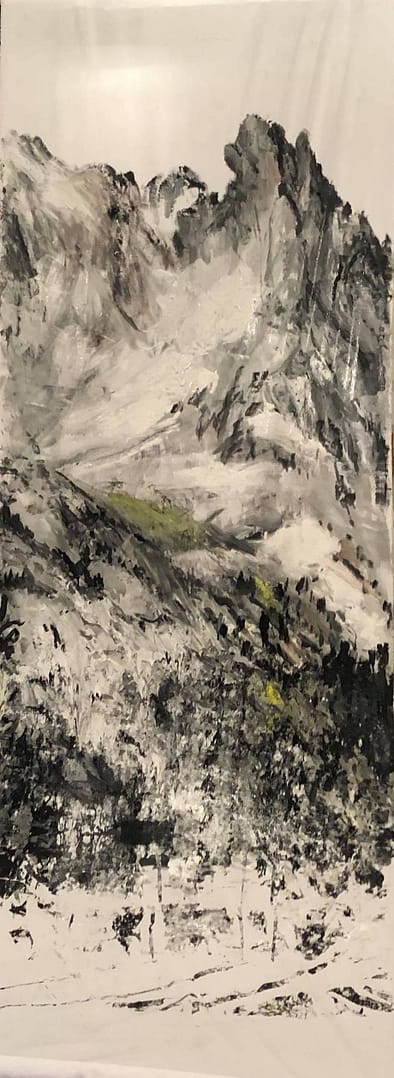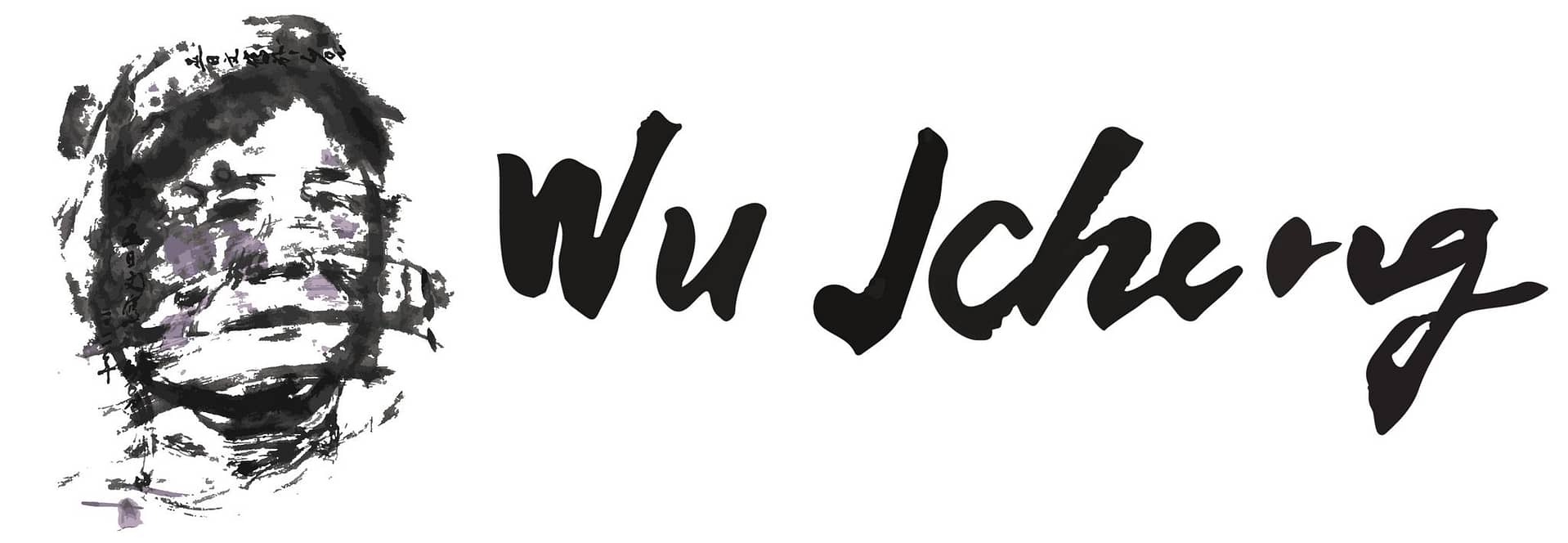Jhycheng wu
Biography
biography
"Unlimited creative freedom"
Born in Yuchi Township, in the heart of Nantou County, Taiwan, in 1961, Jhycheng Wu has been interested in painting since childhood. A shy and non-academic student, painting quickly became an escape, allowing him to express himself and externalize his emotions. He spent a lot of time exploring the studios of various painters, feeling deeply moved and inspired by the atmosphere. Although he was aware of the challenges and discipline required for this art form, the joy painting brought him was enough for his fulfillment. Coming from a farming family, he started working in the fields alongside his parents at a young age. His tasks included harvesting peanuts and sugarcane, as well as working with animals, particularly buffaloes. His parents struggled to understand why he dedicated so much time to painting. To them, it was merely something beautiful but of little practical value. However, he did not let their skepticism discourage him. Instead, he persisted in his passion, finding happiness in the practice of art in his own way.

He began his painting apprenticeship in 1977 alongside the Taiwanese master painter Lee Shih-Chi at the Taipei School of Fine Arts in Taiwan. During this time, he embarked on several years of research on the Taiwanese aborigines with anthropologist Huang Hsien Sin, which led to the creation of several paintings and performances. He later graduated from the Taipei School of Fine Arts in 1980 and continued his training with Lee Shih-Chi until 1985. During his studies, he won several awards, including first prize in Taiwan’s national watercolor competition and first prize in Taiwan’s national Chinese ink wash painting competition.
After two years of military service, Jhycheng Wu decided to broaden his horizons and explore Europe. He was deeply inspired by the great painters of this continent, including Tintoretto, Rembrandt, Cézanne, Munch, and Van Gogh, as well as contemporary artists such as Francis Bacon and Gerhard Richter. Following his professor’s advice, he moved to France, where he joined the École Nationale Supérieure des Beaux-Arts de Lyon in 1988. Three years later, he earned a professional degree, receiving the DNAP (Diplôme National d’Arts Plastiques), and in 1994, he obtained a Master’s degree, awarded the DNSEP (Diplôme National Supérieur d’Expression Plastique).
His career began after completing his studies at the Beaux-Arts de Lyon, and his artistic practice quickly earned him recognition. In 1995, he won several awards, including the Art en Marche competition in Vendée and the MAPRAA prize in Lyon. Over time, his work gained increasing recognition, leading him to travel and exhibit across France, Europe, the United States, and even East Asia. Whether for solo or group exhibitions, Jhycheng Wu showcases his works in numerous venues worldwide, driven by a deep curiosity for new cultures and people. Notable exhibitions include his spectacular shows at the Jesuit Chapel in Nîmes, France, the Crystal Art Foundation in New York, USA, and the Fine Arts Museum in Taipei, Taiwan. His travels also allow him to participate in numerous international competitions, where he has achieved significant success. He notably won first prize at the International Contemporary Art Competition in Geneva and the first prize at the Nîmes Art Biennale in France.
Despite his renown, Jhycheng Wu remains true to his earliest inspirations. First and foremost, his childhood in Taiwan alongside his family plays a fundamental role. His deep love for his homeland and loved ones is a powerful source of inspiration that pulses through his works. The Taiwanese countryside also holds a significant place in his artistic vision, with its diverse landscapes—mountains, flowers, scenes of daily life, and even animals—all serving as recurring themes in his creations.
His art is a harmonious fusion of the Taiwanese culture he was born into and the influences he has gathered throughout his travels. Deeply rooted in his homeland, his style has continuously evolved, enriched by the landscapes and cultures he has encountered. His work captivates with its delicate interpretations and poetic approach to the world. As an accomplished artist, he has synthesized multiple forms of graphic and pictorial expression, becoming a true kaleidoscope. No longer merely reflecting reality or artistic movements, he has transformed into a source that radiates an inner beauty.
Jhycheng Wu does not hesitate to explore various artistic forms, whether in his studio, where he creates oil paintings on canvas as well as traditional Chinese ink works, or during live performances, where he challenges himself to produce pieces within a limited time before an audience.
testimony
“Jhycheng Wu explores the world rather than reproducing it. One could say that he aims to express his doubts about this world through his talents as a painter, which is why the audience may feel the conflict between ordinary subjects and magnificent techniques.” – Chen Kuang-Yi
“Jhycheng Wu’s work is rooted in the veins of Chinese watercolor (the so-called ‘Chinese ink’): and it is known that painting and philosophy are infinitely intertwined there, where philosophy, above all, consists of an aesthetic practice of existence. But this Chinese tradition is only one of the two sources of Wu’s work, which is deeply influenced by the history and techniques of European oil painting.” – Stéphane Pawloff
“Two-dimensional paintings have become a form of nostalgic art in this contemporary world. However, many ‘timeless’ advocates still support nostalgic paintings. Jhycheng Wu is one of them.” – Chen Hungi-Yi
“There is something in Jhycheng Wu’s pictorial work that resembles Mariotte’s experiment, where by stepping away from a fixed painting with one eye closed, one discovers the original white of the color prism… The contemporary artist has this writing of reflection and refraction that meteorizes the naturally rediscovered hues.” – Jacques Bruyas
prize
- 2007 - 1ST PRIZE - Public Art Contest of the National Park of Innovation Incubation Centers, Taiwan
- 2002 - 1ST PRIZE - Art Contest, Villamagna, Italy
- 2002 - 1ST PRIZE - International Contemporary Art Contest (Créa d'Or Arts & Creations), Geneva, Switzerland
- 2001 - 4TH PLACE -International Biennale of Art and Modern Painting, Florence, Italy
- 1998 - 1ST PRIZE - International Biennale of Contemporary Art, Nîmes, France
- 1995 - 1ST PRIZE - L'Art en Marche Contest, Vendée Departmental Hotel, France
- 1995 - 1ST PRIZE - Excellence Contest of the Musée des Pays de l'Ain, France
- 1995 - 1ST PRIZE - Winner of the Initiales at MAPRA (House of Plastic Arts Rhône-Alpes), France
- 1982 - 1ST PRIZE - National Chinese Ink Wash Contest, Taiwan
- 1981 - 1ST PRIZE - National Watercolor Contest, Taiwan
- 1980 - 1ST PRIZE - 7th National Watercolor Sketch Contest, Sun Yat-Sen Memorial Hall, Taiwan
the origin
"The mountain" as seen by the artist
“The Mountain” or How I Built My Mountain
At first, I had in mind to create a large painting, and I was reflecting on this project. In Chinese, it is said that the mind is like the sea, infinite and confused, and I was searching for my subject in this profusion and movement.
Then, invited by friends, I went several times, in different seasons—summer, autumn, and winter—to the mountains, in the Southern Alps, near Névache. I went there to immerse myself in the atmosphere, in the light, in the clear air. Every time I stayed there, amidst the mountains, memories from the past would come to mind. I was born in the mountains of Taiwan, tropical mountains, yet the reflections of the landscapes from my childhood overwhelmed me in Névache, just as they are seen in ancient Chinese painting. Traditional Chinese ink painting is part of my artistic world, and I have been teaching it to my students for years. Mountains and water are key subjects, essential elements of this art for centuries, and since my childhood, the works of Shitao, Suan Tong, Chang Dai-Chien, and others have inspired and nurtured me. For me, the sea, the water, is like the mother, and the mountain symbolizes the father.
A few weeks before creating my painting, I had the opportunity to visit Anselm Kiefer’s exhibition at the Couvent de la Tourette, and I was impressed by the strength of the material in his works. Once again, I was overwhelmed by the memories of my childhood; suddenly, I could physically smell the earth mixed with bark and rice straw that we had used to build our house in the Taiwanese forest. At that moment, I knew exactly how I was going to create my future mountain. I wanted it to be wild, spontaneous, raw, and natural…
So, I set up my studio in the Chapelle St Antoine in the center of the village of Névache, and I asked myself: how could I bring my mountain here? I placed a large white canvas on the floor of the chapel, in the middle of the nave, then I scattered around me the many sketches I had made previously, thinking about my project.

As soon as I was surrounded by my sketches, I felt a great inner security and thought to myself, ‘I’m ready.’ To paint my mountain, I started from the summit. My mind was full of material, I was entirely immersed in it, in an abundance of material. I continued to paint from the peak of my mountain, gradually descending, slowly, gently, laying on the canvas everything that filled my mind: the volume, the colors, the small details of the earth, the rocks, the pebbles, the light filtering through the trees, the birds and their song… I could have painted on and on, indefinitely. It was like a battle, a struggle, a fight. I was out of breath, yet I kept going until, suddenly, I reached the edge… No more canvas! So I thought, ‘It’s done!’ It was time to stop, I had finished what I needed to do.
I called my friend Cyril, and with his son, they helped me lift the canvas, heavy with paint, and immediately hung it in front of the altar, in the choir. As the material was still wet, its weight made it continue to move, it kept working, creating the right kind of chaos. The colors, the shades blended together, giving it strength, freshness, and life—my mountain was alive. I stepped back, looked at it, and thought, ‘It’s good!… The mountain is here!’ I came closer again, looked again, and thought, ‘The material is here too.’
“Statement by Jhycheng Wu transcribed by Véronique Briand-Barralon.”
